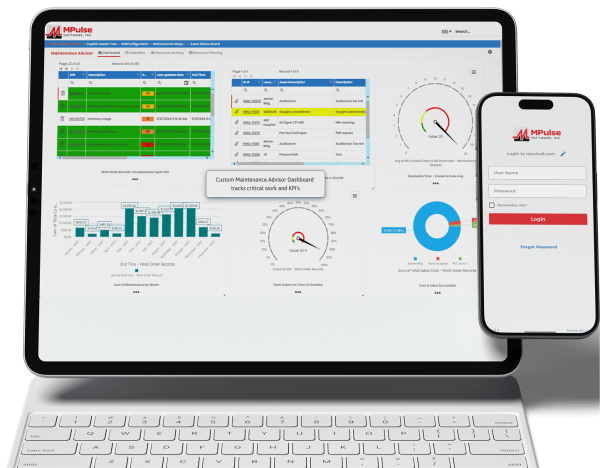Senior managers, like your boss and their bosses, are some of the first stakeholders to consider when it’s time for new CMMS software. Their support can speed up the approval process. However, their refusal can bring it to a screeching halt.
Remember, your expectations and management’s expectations may not align. They’ll be looking for different information and outcomes, so you’ll also need to take that into consideration early on in the process.
Count on your company’s senior managers to care how CMMS will affect the organization’s numbers—especially the ones important to them. You need to show them how new software will impact performance in a positive direction.
Table of Contents
Help Them Hit Their Numbers
Senior managers are responsible for coordinating resources (assets and personnel) toward the achievement of quantifiable goals. If your senior managers are doing their jobs well, they’ll primarily be concerned with “hitting their numbers.”
Depending on their level or their title, those numbers could include any of the following:
- Units produced
- Savings generated
- Revenue generated
- Net gain in productivity
- Quality (measured in various ways)
- Cycle time
Luckily for you, CMMS software offers benefits in all of these areas. What you need to do is show them how.
Start by Asking
But, how can you satisfy their specific demands—without having to earn an MBA—before you search for software?
Simply ask. Sometimes just making the effort to find out what’s most important to them will be enough. Additionally, you’ll likely come away from the discussion with a much clearer idea of the reports they’ll want from a maintenance software solution.
A few good questions to start with:
- What key business metrics do you watch most closely?
- What top three things would you want to achieve with a new CMMS?
- How would you like to improve company performance?
- Does the product need to include certain reports?
Once you have an idea about what your senior managers need, consider how your new maintenance software can help them.
Prep Your Pitch
When it’s time for your pitch, be prepared to answer questions, like…
How much will it cost?
Provide some estimates and options from vendors that provide a ballpark figure. Don’t forget to also include training and support options. Your answer to this question will set up your ability to show the financial benefits.
What are the benefits?
Focus on the benefits to senior management. Outline how CMMS software can provide quantifiable advantages to solve organizational issues. Directly address their needs, per your earlier conversation with them.
Who will be in charge?
Explain who will take the lead on this project, and any other stakeholders required. Be up front about the input you’ll need from internal departments—from accounting to IT to legal. Have a plan in place to consult with each one.
How long will it take?
Start with a basic schedule. Outline the benefits of using implementation services, where CMMS experts guide your organization through the process. The time savings often pay off, resulting in a faster and more thorough implementation with fewer disruptions.
Are there other options?
There are always options, including simply not doing anything at all. Explain why those other options aren’t better or come with significant drawbacks. Relate the disadvantages of those other options back to the problems they need to solve.
How will it affect other stakeholders?
Identify all the stakeholders who might be impacted by this purchasing decision. Develop a plan for getting everyone on board. Show how you will appraise, document, and address each stakeholder’s needs.
What problems will it solve?
Point to real-life examples of how a CMMS solves specific problems, both in maintenance and in other business processes. They’ll see what’s really at stake when they can see how CMMS software can provide solutions.
How will it affect other business processes?
Look at possible benefits, disruptions, and use cases for business units outside maintenance. Also, consider if the CMMS can be easily connected to the other technology your organization uses, like accounting systems.
When will it provide results?
Outline a realistic timeline for your managers to see results. MPulse estimates that successful CMMS implementations typically return 3 to 5 times the initial investment in less than three years.
What are the risks?
You’ll always have risks with big projects. These risks include security, data integration, training, support, scalability, personnel turnover, productivity, and more. Show that you understand those risks and how to mitigate them.
The key to software success is managing the change that new technology brings. Remember that senior managers are people, too. Consider how helping them achieve their goals will make them look good. As a result, you’ll offer motivation for them to nurture and support your CMMS implementation efforts.
Have questions? Need help finding answers? One phone call or email to MPulse can get you started. Contact us.






